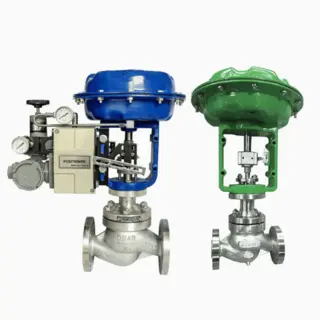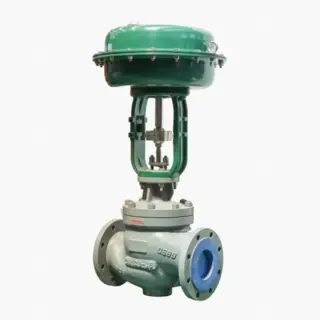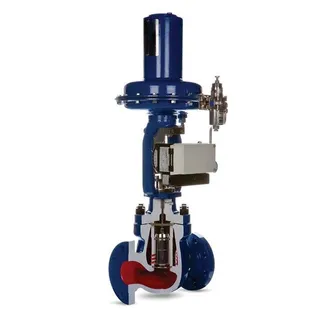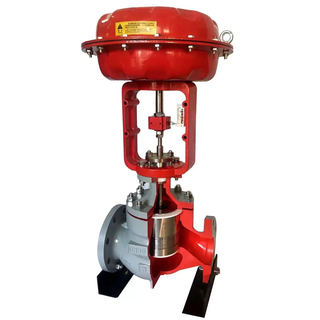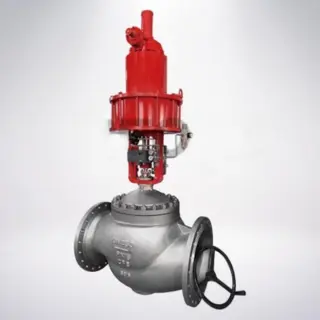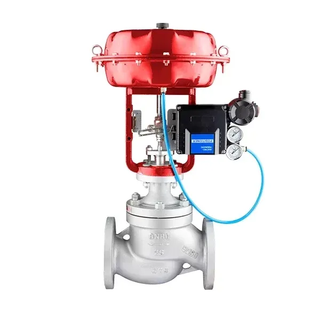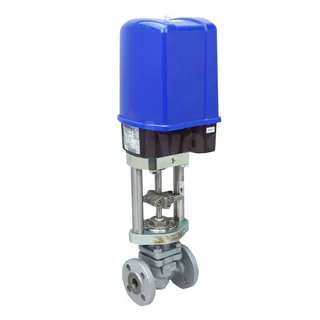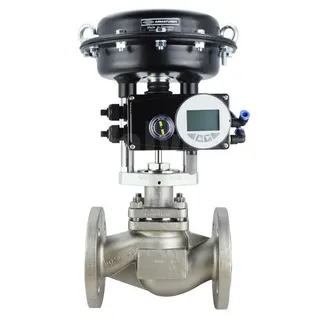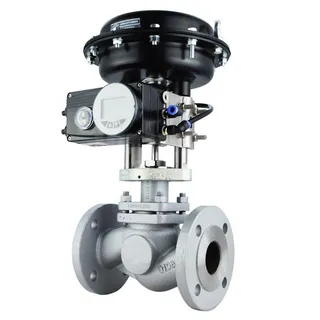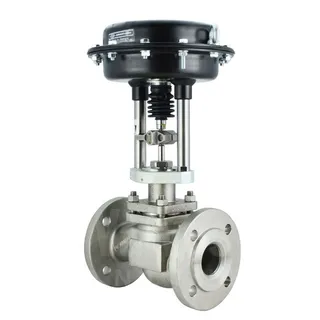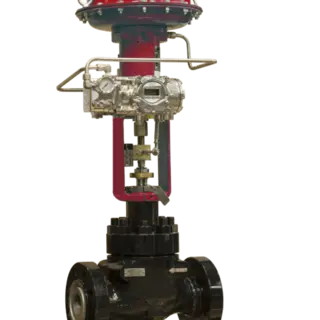A Globe Control Valve is a type of linear motion valve primarily used to regulate fluid flow in pipelines. It consists of a movable disk (or plug) and a stationary ring seat in a globe-shaped body. By raising or lowering the plug, the valve controls the flow rate. Globe valves are versatile and suitable for various applications, including throttling and isolation services in industries such as oil and gas, chemical processing, and power generation. Their design allows for precise flow control, making them essential components in process control systems where accurate regulation of flow, pressure, or temperature is required.
A globe control valve is designed to regulate fluid flow within a pipeline. Unlike ball valves, which are typically used for on/off control, globe valves are specialized for precise flow regulation. Their construction includes a movable plug or disc element and a stationary seat ring inside a spherical body, allowing for fine adjustments to the flow rate.
The key feature that distinguishes globe valves is their ability to modulate the flow of fluids, making them ideal for applications where accuracy is essential, such as in chemical processing, power plants, and HVAC systems.
A signal from a process controller directs the actuator on how to position the valve plug, determining the required flow rate.
The actuator moves the valve stem vertically. In manual systems, this is done via a handwheel, while automated systems use the actuator to adjust the stem.
As the stem moves, the plug adjusts its position relative to the valve seat. Lifting the plug opens the valve, allowing fluid to pass, while lowering it closes the valve and stops the flow.
Globe valves can be precisely adjusted to intermediate positions, allowing for continuous control over fluid flow. This capability makes them perfect for applications where fine flow adjustments are required.
Globe control valves are used in diverse industries due to their precision in regulating fluid flow:
To control the flow of hydrocarbons in pipelines and refineries.
For regulating chemicals in manufacturing processes, ensuring safety and efficiency.
To manage steam, water, and other fluids in power plants, helping regulate temperature and pressure.
Essential for controlling water flow and treatment chemicals.
Used to manage heating and cooling fluid flows, maintaining temperature control.
Selecting the appropriate globe control valve requires considering several key factors:
Ensure the valve matches the required flow capacity and pressure conditions.
Choose materials compatible with the fluid being controlled, such as stainless steel for non-corrosive fluids or high-performance alloys for aggressive chemicals.
Depending on system needs, choose a valve with a flow characteristic (e.g., linear, equal percentage) that suits your application.
Ensure the valve can integrate with automated systems, including actuators and controllers.
The valve should be able to handle the operating conditions (pressure, temperature, and flow rate).
Globe valves can be actuated manually, pneumatically, electrically, or hydraulically. Pneumatic and electric actuators are commonly used in automated systems.
Proper maintenance of globe control valves ensures long-term performance, reliability, and safety. Regular checks and timely repairs prevent failures and optimize valve efficiency. Here’s a concise guide to maintaining globe control valves:
Inspect key components, including:
Valve Body: Check for corrosion, cracks, or leaks.
Valve Seat and Plug: Look for pitting or wear that could affect sealing.
Stem: Ensure proper alignment and inspect for corrosion.
Actuator: Test functionality and check for leaks or malfunctions.
Lubricate the valve stem, plug, and moving parts to reduce friction and wear. Follow manufacturer recommendations to avoid over-lubrication or improper lubricant use.
Clean internal components, especially the valve body and seat, to remove debris and deposits that could obstruct fluid flow. Wipe down external parts to prevent build-up.
Resurfacing: Smooth out worn or pitted seats and plugs.
Replacement: Replace heavily damaged or worn-out seats and plugs to maintain proper sealing.
Ensure the actuator is aligned with the valve stem and check for leaks or poor performance. Perform pressure tests for pneumatic or hydraulic actuators to verify proper force.
Leaks: Likely caused by worn seats, plugs, or packing.
Sticking Movement: Caused by debris in the valve or actuator issues.
Excessive Noise: Check for misalignment or wear in the plug and seat.
Regularly calibrate the valve to ensure accurate flow control. Test the valve under controlled conditions and check positioner settings for automated systems.
Replace worn components such as seals, plugs, and actuators. Continuing to operate with damaged parts can cause inefficiencies and more severe damage.
Schedule routine maintenance to prevent issues before they arise. Regularly inspect, lubricate, clean, and test the valve to ensure it remains in optimal condition.

